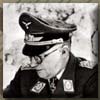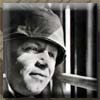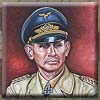 |
 |
 |
 |
 |
| Menu: |
| Home |
| Store |
| Buying |
| X-Sales |
| Info |
| FAQ's |
| Contact |
| Links |
| Ramcke was born in Schleswig to a family of farmers. He joined the German Imperial Navy in 1905. During the First World War he fought in the West with the German Marine-Infanterie, mainly in the area of Flanders. In 1914 he was decorated with the Iron Cross second class and later the Iron Cross first class. After a defensive action against three British attacks he was decorated with the Prussian Golden Merit Cross, the highest decoration for non commissioned officers in the German Imperial Forces, and became a deputy-commissioned officer. In 1918 he attained the rank of Leutnant der Marine-Infanterie. By the time the Armistice was signed, he had risen to the rank of oberleutnant. In 1919 he then fought against the Bolsheviks in the Baltic as a member of the so-called "Russian Army of the West" (composed mostly of German veterans). Ramcke stayed in the Reichswehr during the Weimar Republic period. He continued to serve in the new Wehrmacht during the Third Reich, climbing through the ranks until he attained the rank of Oberstleutnant in 1937. | ||
| On 19 July 1940, he was transferred to the 7th Fliegerdivision under the command of General Kurt Student and was promoted to Oberst. At the age of 51 he successfully completed the parachute qualification course. In May 1941 working with the division Stab he helped plan and also took part in Operation Merkur, the airborne attack on Crete. Ramcke led the Fallschirmjäger-Sturm-Regiment 1, and also led Kampfgruppe West. | ||
| After the successful, but costly, victory in Crete, remainders of several Fallschirmjäger units were formed into a ad-hoc brigade, and command was given to Ramcke. He was also promoted to Generalmajor on 22 July 1941. In 1942 Fallschirmjäger-Brigade Afrika was sent to North Africa to join Rommel's Afrikakorps. The brigade was renamed Fallschirmjäger-Brigade Ramcke in July and supported the offensive towards the Suez Canal, but when the offensive got bogged down they entered the line at El Alamein. | ||
| The British attack at the Second Battle of El Alamein did not directly strike the unit but they soon became involved in heavy fighting. During the withdrawal of the Afrikakorps, the Brigade was surrounded and written off as lost by the high command since it had no organic transport. Rather than surrender, Ramcke led his troops out of the British trap and headed west, losing about 450 men in the process. They soon captured a British supply column which provided not only trucks but food, tobacco and other luxuries. About 600 of the paras later rejoined the Afrikakorps in late November 1942. Ramcke was sent back to Germany, where he was awarded the Oak Leaves to the Knights Cross. | ||
| In 1943 Ramcke, now a generalleutnant, took command of 2nd Fallschirmjäger-Division. The division was deployed to Italy, to help bolster the German forces there to ensure that Italy did not join the Allies. When Italy signed the armistice with the Allies on 8 September 1943, the division, along with other German units, took part in Operation Achse to take control of the country. Ramcke led his division in an assault on Rome, and secured the city two days later. The division continued serving in Italy for a while, during which time Ramcke was wounded after his car was forced off the road by a Allied fighter-bomber. | ||
| Ramcke returned to command the division in early 1944. By this time 2nd FJ was fighting on the Eastern Front, during the withdrawal from the Bug River area. Ramcke fell ill during this time and was sent back to Germany for recuperation. He assumed command again in May 1944 to oversee the rebuilding of the 2nd FJ-Division, which was based near Köln. | ||
| Following the Allied D-Day landings on 6 June, 2nd Fallschirmjäger-Division was sent to the Brittany region of France, and took up the defence of Brest. Following Operation Cobra, the allied breakout from Normandy, Major-General Troy H. Middleton's U.S. VIII Corps hooked left from Normandy and attacked the Brittany region. The German defenders in the region fell back on Brest, and Ramcke assumed command of the garrison, now known as Festung Brest. Commanding about 35,000 German troops Ramcke led the defense of Brest from 11 August until on 19 September General der Fallschirmtruppe Hermann-Bernhard Ramcke surrendered, on the same day as he was awarded the Swords (99th Recipient) & Diamonds (20th recipient) to the Knights Cross. | ||
| Ramcke was shipped to the USA as a POW and
later to England and France. While a POW at Camp Clinton, Mississippi,
he wrote a letter protesting the Morgenthau Plan, named for
Henry Morgenthau, Jr, U.S. Treasury Secretary, which he saw
as another attempt to enforce harsh treatment upon Germany (as
had happened following WWI).
In 1951 Ramcke was charged with war crimes in France, but he managed to escape from captivity to Germany. He returned voluntarily and was sentenced to 5 years imprisonment by a French court, but due to time served he was released 3 months later. On his release, Ramcke returned to Germany and died on 4 July 1968 at Kappeln. |
||
|
||


